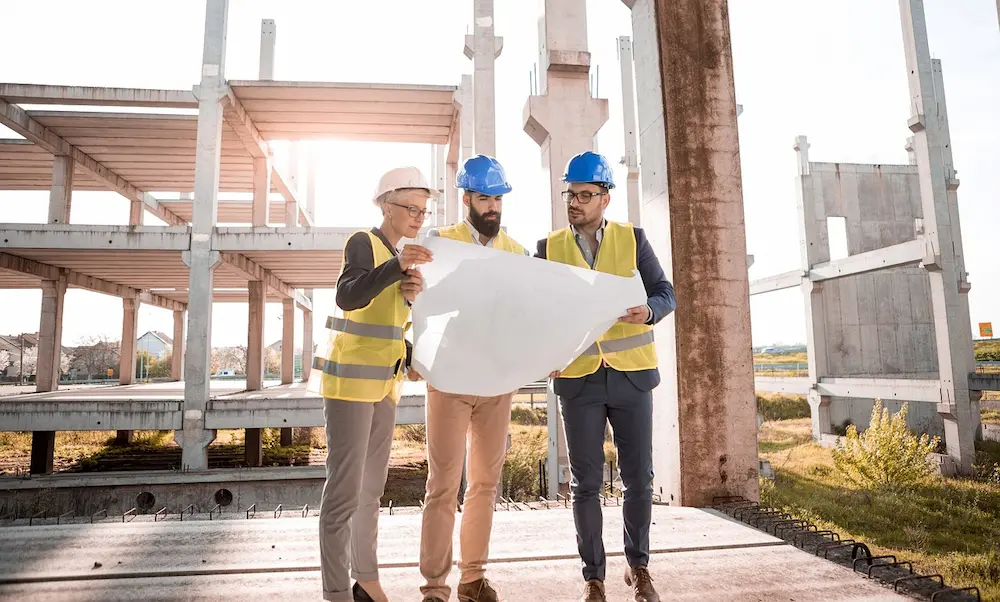In the construction industry, safety is a critical concern that extends far beyond mere compliance with regulatory standards. It is about fostering a culture that prioritizes the well-being of every individual on site. In this document, we will explore six essential safety measures that construction sites can implement to ensure a safer working environment. These practices not only adhere to legal obligations but also demonstrate a commitment to the highest standards of safety, potentially reducing accidents and fostering a proactive approach to hazard management.
1. Comprehensive Safety Training
Safety training is the cornerstone of a secure construction site. Regular, updated training ensures that every worker has current knowledge of safety practices and understands the importance of compliance. This training should not be a mere formality but interactive sessions that involve practical demonstrations and assessments. It should be more than just knowing the types of noise barriers.
Furthermore, training programs should be tailored to the specific needs of various job roles. Such specialization ensures that workers have detailed knowledge of the hazards unique to their position and the safety procedures to mitigate them. Training should also be inclusive, catering to all levels from new hires to seasoned professionals. Reputable Chicago construction accident injury lawyers note that training can serve as critical evidence of the employer’s commitment to safety and reduce legal liabilities in case of an accident. It also fosters a culture of safety among workers, making them more vigilant and proactive in identifying and addressing potential hazards.
2. Personal Protective Equipment (PPE)
The use of appropriate personal protective equipment is crucial in minimizing risks on construction sites. Helmets, safety glasses, gloves, and high-visibility clothing are just some of the PPE that safeguard workers from potential hazards. Ensuring that all personnel are equipped with well-maintained and correctly fitting PPE is a responsibility that employers must take seriously.
In addition to providing the necessary PPE, construction sites should also have clear policies regarding its use. Workers should be educated about the importance of PPE, know when and how each item should be used, and understand the repercussions of non-compliance. PPE should be seen not just as gear, but as an integral part of a worker’s daily routine.
3. Regular Equipment Inspections
To mitigate the risk of accidents, regular inspections of equipment and machinery are imperative. This involves not only checking the functionality but also ensuring that safety features are intact and operational. These inspections can prevent catastrophic failures and ensure that the equipment is safe to use.
Moreover, construction sites should maintain detailed logs of equipment inspections, servicing, and repairs. Keeping accurate records helps track the maintenance history and schedule future checks, creating an organized approach to equipment management that prioritizes worker safety.
4. Hazard Communication
Effective communication of potential hazards is essential on a construction site. This includes proper signage, regular updates at safety meetings, and accessible reporting systems for potential risks. A well-informed crew is better equipped to avoid accidents and respond to emergencies.
It also requires a system that supports openness and transparency. Encouraging workers to report unsafe conditions without fear of reprisal ensures that potential hazards are addressed promptly. A culture that values communication greatly enhances site safety.
5. Emergency Preparedness
An established emergency response plan is a vital component of a comprehensive safety program. This plan should outline procedures for various potential emergencies, from medical crises to structural failures. Regular drills will help cement these procedures, ensuring a quick and coordinated response when required.
Additionally, emergency preparedness should include easy access to first aid supplies, fire extinguishers, and evacuation routes. Training all personnel in basic first aid and emergency responses expands the safety net, providing immediate action that can prevent further harm or save lives.
6. Ongoing Safety Audits
Lastly, ongoing safety audits are a proactive step toward identifying and remedying risks before they result in injuries. These audits, conducted by internal or external safety professionals, should be regular and thorough, analyzing every aspect of the construction process and environment for potential improvements.
These audits should not be punitive but rather a constructive part of the safety culture. They serve as an opportunity for learning and growth, underlining the company’s ongoing commitment to safety and providing feedback that promotes continual improvement in safety practices.

In conclusion, safety on construction sites goes beyond just complying with regulations. It is a commitment to creating a culture that prioritizes the well-being of workers and involves ongoing efforts to identify and mitigate risks. By implementing these six essential safety measures, construction sites can foster an environment that promotes safety, reduces accidents, and protects the lives and livelihoods of all involved. Furthermore, regular evaluation and improvement of safety practices can create a ripple effect, inspiring other industries to prioritize safety and promoting a safer working environment for all.








